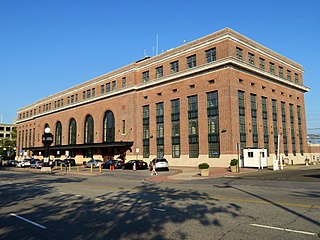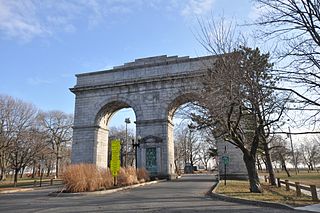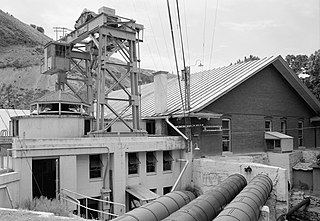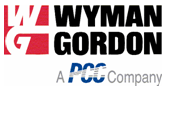
George Westinghouse Jr. was an American entrepreneur and engineer based in Pennsylvania who created the railway air brake and was a pioneer of the electrical industry, receiving his first patent at the age of 19. Westinghouse saw the potential of using alternating current for electric power distribution in the early 1880s and put all his resources into developing and marketing it. This put Westinghouse's business in direct competition with Thomas Edison, who marketed direct current for electric power distribution. In 1911 Westinghouse received the American Institute of Electrical Engineers's (AIEE) Edison Medal "For meritorious achievement in connection with the development of the alternating current system." He founded the Westinghouse Electric Corporation in 1886.

The Westinghouse Electric Corporation was an American manufacturing company founded in 1886 by George Westinghouse. It was originally named "Westinghouse Electric & Manufacturing Company" and was renamed "Westinghouse Electric Corporation" in 1945. The company acquired the CBS television network in 1995 and was renamed "CBS Corporation" until being acquired by Viacom in 1999, a merger completed in April 2000. The CBS Corporation name was later reused for one of the two companies resulting from the split of Viacom in 2005.

Colt's Manufacturing Company, LLC is an American firearms manufacturer, founded in 1855 by Samuel Colt and now a subsidiary of Czech holding company Colt CZ Group. It is the successor corporation to Colt's earlier firearms-making efforts, which started in 1836. Colt is known for the engineering, production, and marketing of firearms, most especially between the 1850s and World War I, when it was a dominating force in its industry and a seminal influence on manufacturing technology. Colt's earliest designs played a major role in the popularization of the revolver and the shift away from single-shot pistols. Although Samuel Colt did not invent the revolver concept, his designs resulted in the first very successful model.

The Windham Textile and History Museum is a museum in Willimantic, Connecticut, in the New England region of the United States. It is currently located in Main St.

In railway signalling, an interlocking is an arrangement of signal apparatus that prevents conflicting movements through an arrangement of tracks such as junctions or crossings. In North America, a set of signalling appliances and tracks interlocked together are sometimes collectively referred to as an interlocking plant or just as an interlocking. An interlocking system is designed so that it is impossible to display a signal to proceed unless the route to be used is proven safe.

New Haven Union Station is the main railroad passenger station in New Haven, Connecticut. It is the third such station in the city of New Haven, preceded by both an 1848 built station in a different location, and an 1879 built station near the current station's location. Designed by noted American architect Cass Gilbert, the present beaux-arts Union Station was completed and opened in 1920 after the previous Union Station was destroyed by fire. It served the New York, New Haven and Hartford Railroad for the next five decades, but fell into decline following World War II along with the United States railroad industry as a whole.

The United Electrical, Radio and Machine Workers of America (UE), is an independent democratic rank-and-file labor union representing workers in both the private and public sectors across the United States.

Harvey Hubbell II was an American inventor, entrepreneur, and industrialist. His best-known inventions are the U.S. electrical plug and the pull-chain light socket.

The Hartford Electric Light Company (HELCO) is a defunct electrical company that was located on Pearl Street in Hartford, Connecticut. HELCO merged with the Connecticut Power Company in 1958. These merged with the Connecticut Light and Power Company (CL&P) and the Western Massachusetts Electric Company (WMECO) in 1966 to form Northeast Utilities (NU). Its former corporate headquarters building and main facility are in the Ann Street Historic District.

NEMA connectors are power plugs and receptacles used for AC mains electricity in North America and other countries that use the standards set by the US National Electrical Manufacturers Association. NEMA wiring devices are made in current ratings from 15 to 60 amperes (A), with voltage ratings from 125 to 600 volts (V). Different combinations of contact blade widths, shapes, orientations, and dimensions create non-interchangeable connectors that are unique for each combination of voltage, electric current carrying capacity, and grounding system.

The Ames Hydroelectric Generating Plant, constructed in 1890 near Ophir, Colorado, was one of the first commercial system to produce and transmit alternating current (AC) electricity for industrial use and one of the first AC hydro-electric plants ever constructed. It became operational in 1891 and was built by Westinghouse Electric around two of their large alternators. One was set up in the valley as a generator and driven by water. It was connected by a 2.6-mile (4.2 km) transmission line to the second alternator used as a motor up at the Gold King Mine to drive the mining operation. The facility has been changed and upgraded over the years but is still in operation. It is now on the List of IEEE Milestones.

The history of Bridgeport, Connecticut was, in the late 17th and most of the 18th century, one of land acquisitions from the native inhabitants, farming and fishing. From the mid-18th century to the mid-19th century, Bridgeport's history was one of shipbuilding, whaling and rapid growth. Bridgeport's growth accelerated even further from the mid-19th century to the mid-20th century with the advent of the railroad, Industrialization, massive immigration, labor movements until, at its peak population in 1950, Bridgeport with some 159,000 people was Connecticut's second most populous city. In the late 20th century, Bridgeport's history was one of deindustrialization and declining population, though it overtook Hartford as the state's most populous city by 1980.

Oliver Blackburn Shallenberger was an American electrical engineer and inventor. He is associated with electrical inventions related to alternating current. He is most noted for inventing the first successful alternating current (AC) electrical meter, the forerunner of the modern electric meter. This was critical to general acceptance of AC power.

Bridgeport is the most populous city in the U.S. state of Connecticut and the fifth-most populous city in New England, with a population of 148,654 in 2020. Located in eastern Fairfield County at the mouth of the Pequonnock River on Long Island Sound, it is a port city 60 miles (97 km) from Manhattan and 40 miles (64 km) from The Bronx. It is bordered by the towns of Trumbull to the north, Fairfield to the west, and Stratford to the east. Bridgeport and other towns in Fairfield County make up the Greater Bridgeport Planning Region, as well as the Bridgeport–Stamford–Norwalk–Danbury metropolitan statistical area, the second largest metropolitan area in Connecticut. The Bridgeport–Stamford–Norwalk–Danbury metropolis forms part of the New York metropolitan area.

The Seaside Institute in Bridgeport, Connecticut is a Richardsonian Romanesque rock-faced granite, brick, brownstone and terracotta building designed by Warren R. Briggs and completed in 1887 at the corner of Lafayette and Atlantic avenues, not far from Seaside Park. Originally built for the use and benefit of the female employees of the Warner Brothers Corset Company, it was listed on the National Register of Historic Places in 1982. The buildings is currently used by the Bridgeport International Academy.

The Olmsted Power Station is a historic building located in Orem, Utah, United States. It is listed on the National Register of Historic Places. The hydropower plant was dedicated on April 12, 1904 and decommissioned on September 21, 2015. The plant will become a museum after a seismic refit of the building.

Wyman-Gordon is a company that designs and manufactures complex metal components. Founded in 1883 as a manufacturer of crankshafts for looms, it has a long history of making forged metal components, particularly for the aerospace industry. Wyman-Gordon is a wholly owned subsidiary of Precision Castparts Corp., and is based in Houston, Texas. It has thirteen (13) plants in five countries, and employed about 2,500 people as of 2012.

The East Washington Avenue Bridge refers to the bridges that have connected East Washington Avenue over the Pequonnock River in Bridgeport, Connecticut. Records state that a bridge was first constructed on the site in 1836, but no description of the bridge has been found. The second bridge was a truss swing design and underwent heavy repair and modernization in 1893. The third design was a movable Strauss underneath-counter weight deck-girder bascule bridge. The plans were drafted by James A. McElroy, using Joseph B. Strauss's design in 1916. However, construction was delayed for years because of a dispute with the contractor and a lack of funds. The bridge was completed by Bridgeport Dry Dock and Dredging when the State of Connecticut appropriated $350,000 to erect the bridge. Completed in 1925, the bridge underwent several modifications throughout its service life. On July 26, 1983, the bridge was closed after it was found to be in danger of collapse. It reopened after repair, but was closed in the 1990s before being replaced with a modern bascule bridge in 1998. In 2010, the report listed the deck and superstructure conditions as "Good" and the substructure condition as "Satisfactory".

Hubbell Incorporated, headquartered in Shelton, Connecticut, is an American company that designs, manufactures, and sells electrical and electronic products for non-residential and residential construction, industrial, and utility applications. Hubbell was founded by Harvey Hubbell as a proprietorship in 1888, and was incorporated in Connecticut in 1905.
There are approximately 20 types in common use around the world, such as AC power plugs and sockets, and many obsolete socket types which are still found in older buildings.





















